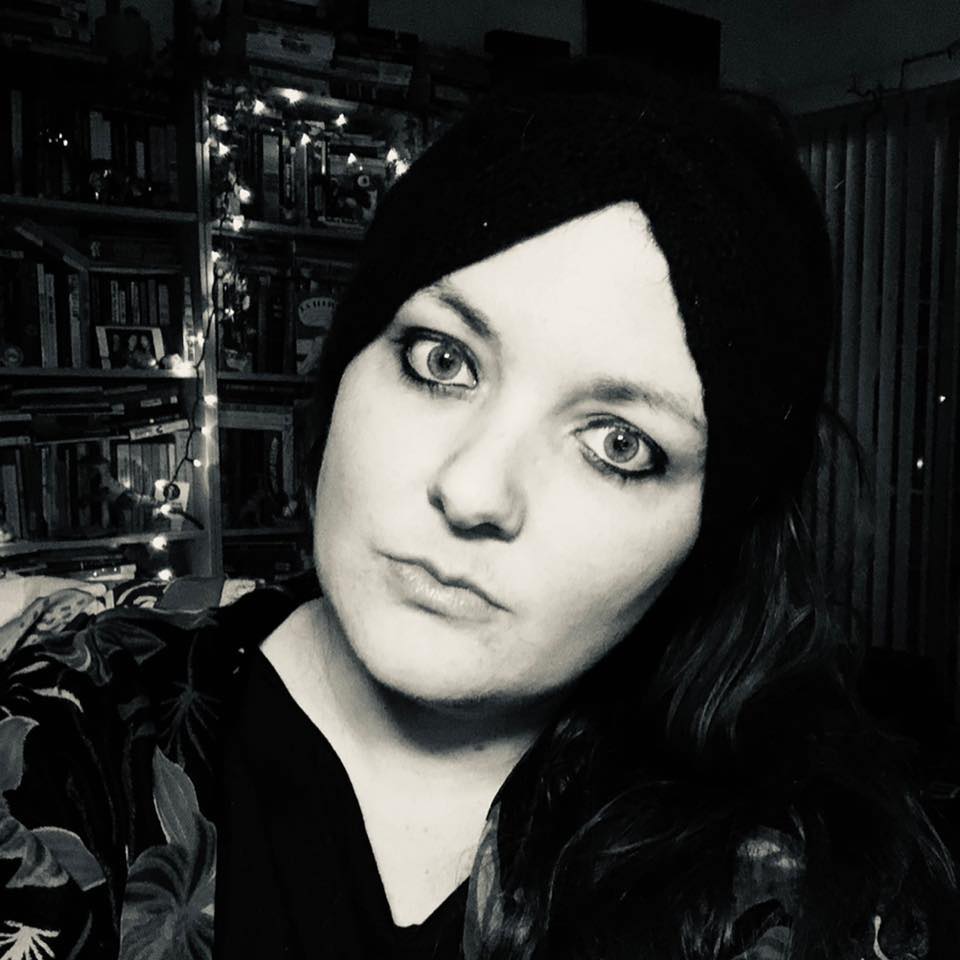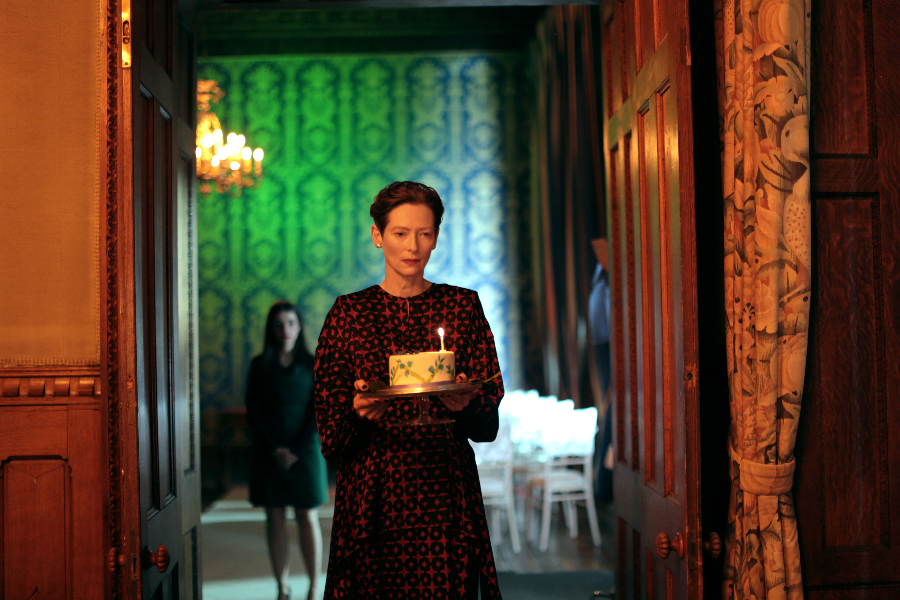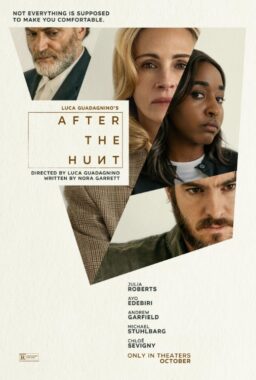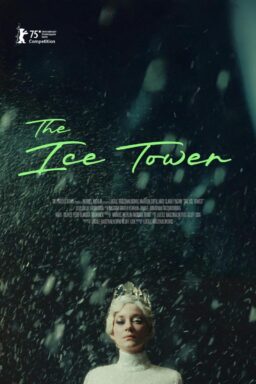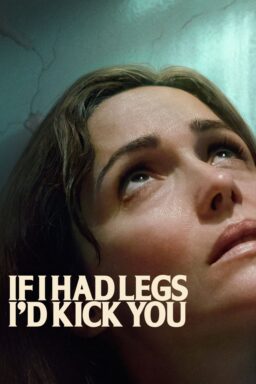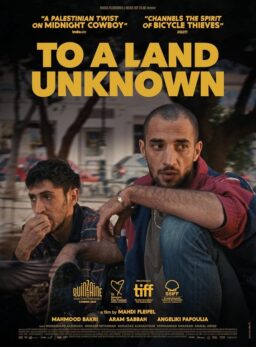Filmmaker Joanna Hogg mesmerized critics and audiences alike with her duo of semi-autobiographical films 2019’s “The Souvenir” and 2021’s “The Souvenir Part II.” In filming these raw coming-of-auteur dramas, Hogg reunited with Tilda Swinton, her childhood friend and the star of her thesis film “Caprice.” During quarantine the two worked together again on “The Eternal Daughter,” a meditation not only on memory but on the inexorable connection between mothers and daughters told through the lens of a gothic ghost story.
While the film can be seen as an extension of “The Souvenir” movies, it also works as a stand-alone piece of art. In “The Eternal Daughter” Swinton plays an older version of Julie, the filmmaker at the center of “The Souvenir” played by Swinton’s own daughter Honor Swinton Byrne, as well as an older version of Julie’s mother Rosalind, whom Swinton also played in the earlier films. Late one foggy night, mother and daughter arrive at a nearly vacant hotel, once the grand home of Rosalind’s aunt. As Julie attempts to work on a film based on Rosalind’s memories of the place, a ghost-like presence begins to rise to the surface.
Although she is joined by the hotel’s acerbic receptionist (Carly-Sophia Davies), its kindly groundskeeper (Joseph Mydell), and a dog named Louis, “The Eternal Daughter” is almost solely a one-women showcase for Swinton’s immense talents, both dramatic and comedic. As the heart of the film slowly reveals itself to the audience, so does the exquisite synchronistic artistry of Swinton and Hogg.
RogerEbert.com spoke to Swinton and Hogg over Zoom during the New York Film Festival about the connective tissue of the trilogy, finding inspiration in Victorian ghost stories, how to get an emotional performance from a dog, and the revelatory pleasure of their enduring creative partnership.
I saw “The Eternal Daughter” at the Toronto International Film Festival and left feeling like it was a sort of coda to “The Souvenir” films, which were also so beautifully evocative. Do you feel the films speak to each other?
JOANNA HOGG: It’s interesting because we were actually just having this same conversation. I feel that “The Eternal Daughter” is very much its own contained world. But, there are obviously some arrows that point towards “The Souvenir” films and the other way around. Really, I just see it in my mind’s eye as something very, very, of its own. It’s such a different atmosphere to those films. I think with all my films going back, they’ve all had something that’s gone from a previous film into a new film. With this one, Rosalind and Julie have moved into “The Eternal Daughter” at a very different stage in life. So I don’t think it needs to be framed by the “Souvenir” films.
You mentioned this connection of your films, and this one made me think of “Exhibition,” which all took place in one house. I love the line in “The Eternal Daughter” about buildings having memories. How did you find your location for this film and how did you connect the memories in that building to the memories of your mother?
JH: I found the house actually on the internet because it was when we were all at home around March of 2020. Tilda and I were already having a conversation about “The Eternal Daughter,” but there was no house yet. Very, very crucial for all my films is the space that it takes place in, so it is just almost the most important thing to find. So I was Googling houses around the country, and it was very much about finding an image of a building that made me feel a little bit scared. So I looked at Scotland, I looked in Cornwall. I looked at the most haunted houses in the UK. Then I saw an image of Soughton Hall in north Wales, and it just looked frightening, but also very beautiful.
TILDA SWINTON: And very cinematic. I think that’s the other thing, is that it feels almost as if it’s appeared in films in our imagination before; they haven’t. No one’s ever shot in it before.
JH: Which was a really nice thing because there were other houses that I found that had been used in “Downton Abbey” and other things and it needed to be something that we’ve never experienced before on film.

It’s surprising that it’s never been shot before because it reminded me of the opening sequence of Ken Russell’s “Lair of the White Worm,” which I saw way too young, and that opening was like going back into that memory, so I was already terrified from the start. The atmosphere also makes you feel like the end of a Victorian ghost story, like the ones Edith Wharton wrote where you don’t know what you read by the end and have to read it again. Were any of those inspirations in the tone of the film?
JH: One film was Jacques Tourneur’s “Night of the Demon” which is really atmospheric.
TS: Also, “The Innocents,” of course. One of the things that “The Innocents” has a very uninhibited use of dry ice, which encourages that outside on the lake with the images, and there’s something very no holds barred about that.
JH: And incredible sound design. Actually, with Jovan Ajder, the sound designer, we listened to “The Innocents.” We watched it, but really listened to the soundtrack of that and how the sounds are very unnatural, in a way, and very, very, very present. Then there were lots of short stories. I read Edith Wharton’s short ghost stories, but also M. R. James, of course, it goes without saying, and Kipling as well. So it was more reading than watching in a way.
Tilda, I read that you did a lot of improvisation in your conversations with yourself. But I also found that you did a lot of reacting to sounds, a lot of the tension is built from those reactions. How did you craft those reactions when I’m assuming most of those sounds were put in after the fact?
TS: Yeah, it’s very interesting. I was thinking about this today, I have to confess because I was here, almost exactly, at the New York Film Festival, last year with Apichatpong Weerasethakul’s “Memoria,” which is also about an adventure in which I was portraying someone who was living in her ears and I was thinking of the difference between her journey and Julie’s journey, and I was realizing that, she’s listening, but she’s also feeling, she’s sensing. She’s not necessarily listening to sounds in the house; she’s listening to movements in herself.
So you’re right, the sounds in the house were put in afterwards, but it was important that those gestures of listening are almost like she’s trying to catch something. Not just a sound, a memory, maybe a feeling or a smell. When I see the film, I think Louis is her familiar, and she’s like a pointer, or a hand waiting for the wind almost. So it’s not just about listening to sound, it’s about trying to capture a frequency or a bandwidth. It was about trying to make those gestures capable of holding all of that possibility, so that when you see the film for the second time, you realize that she’s not just listening to creaks in the house; she’s also kind of trying to wire into other stuff.
You mentioned Louis the dog. Everyone I talked to after this movie mentioned this is maybe the best dog actor ever and …
TS: He’s the best actor. Let’s be honest about this.
I was just wondering where the dog came from and what it is like both directing a dog of this caliber of talent?
JH: There was not much directing involved, I have to say, because it was Tilda’s dog and he will answer her call. So in the scenes where Louis is having to react on his own, Tilda is behind a door or down the corridor talking to him.
TS: In “The Souvenir” films, all those Springer Spaniels are Louis’ relations. In the first film is his mother and aunt, Dora was Rosie, and in the second film Superman, Dora and Rosie a bit older, and his nephew, Snow Bear. And in fact, Louis was maybe going to join us on the second “Souvenir,” and I remember saying to Joanna, “We have to keep Louis for a solo appearance because he’s got something special.” He’s quite extraordinary. I’ve had the experience of working with a proper professional dog before. I worked with Pedro Almodóvar with a proper, very fancy, superstar dog, who was great. But he wasn’t really that interested in me, he was very interested in the guy behind me with a sausage in his pocket. But Louis is really interested in me. He will do anything I asked him to do. And so that’s my hot tip, if you’re going to work with a dog, make sure that there’s a real bond between the animals in front of the camera
JG: He’s incredibly sensitive. We were shooting in the order of the story, and Louis really felt the story. He’s my ideal actor, because he really embraced it. There was a point at the end where I really felt for him. We were worried because there was this scene where, well, I can’t say it because I don’t want to reveal the scene at the end.
TS: There’s a transition, let’s say, which is not a real transition. It’s an image in my mind. But if you remember that moment, he responded, and all I was doing was thinking that that was happening. It’s very interesting. I would like to speak to a dog psychologist about that. How it was that he picked up on that, on the significance of that moment?
JH: I was thinking of a later moment. Yes. Where he didn’t want the story to end. He was shaking a bit.
TS: Well, he was extremely happy during the shoot, because he was by himself and he was away from his sister, and he wasn’t in a pack. He got more cuddles than he usually does. So he loved it. I had a friend who sent me a message after the screening in London that just said “Lassie who?”
I feel like if Louis wanted, he could have a huge career.
TS: I’ll talk to his people.
It’s interesting hearing about Louis and his family’s connection to the films, because they also have you Tilda, and your daughter (Honor Swinton Byrne), and they are in a way about you Joanna, and your mother. There are a lot of familiar connections. I’d love to chat a bit about what is so fascinating about these complicated relationships between mothers and daughters, and how a mother can manifest almost in a daughter without the daughter even realizing it. I do think that’s why the casting of you as yourself against yourself worked so well for me in this film.
TS: Well, that’s really the subject of this film. Where does one end and the other begin? And I suppose the fascination is partly because it’s something that we all know about. I mean, there’s no one seeing this film who hasn’t at least had a mother and must at some level have asked themselves that question, particularly women, but not only women, I know men also who had the same question in their mind, where do I begin and where does my mother end? That feeling of possession and almost incarnation.
JH; Which has no ending really, no matter what age you are. My mother is no longer with us, but I still feel her around. And I feel that very much inside me. And I’m still at times confused by the relationship and have the feelings of guilt and anxiety that she experiences in the film. It’s all inside us. I’ve been trying to resolve that in whatever way for the rest of my life.
TS: And I think there’s no question and don’t see any reason why it would ever end. I mean, I had this experience—my mother died 10 years ago—and I remember telling Joanna, and remembering to remind us of this when we started to talk about “The Eternal Daughter,” that in the months after, particularly weeks after my mother died, I found myself completely unconsciously using language that only she used. Wearing things very much more close to what she would wear, sometimes actual pieces of clothing that she wore. It wasn’t something I was seeking to do. It was nothing performative. It was entirely internalized. It was like a wavelength. It was like, I repeat the word, a frequency. Like picking up her frequency was a natural thing to do, particularly after she left us.
I just mentioned this to Joanna, and then when we started working on this, especially when we decided that I would play both, it felt to us this is now the material that we’re dealing with, we’re dealing with that dovetailing and that sort of entanglement of identity that goes with the territory of being mother and daughter. I really look forward to audiences seeing this film, and there being a dialogue around this stuff. I’m so curious to know if other people have had this experience.
When you mentioned wearing clothing, it’s not with my mother, but I often find myself mimicking things my father would say, speaking the way he does. A couple of years ago I bought a bathrobe and then two months into wearing this bathrobe, I realized it was the exact same bathrobe that my dad always had. I think there is something that you express maybe without realizing it because it reminds you of that comfort you had with that parent, or maybe to some extent, even a tension.
TS: There’s another aspect, which is, you know, not everybody experiences this, but as a mother, there’s a whole question, when one has babies, of how to separate, how to manage that, and there are many erudite and extremely wise books written on this subject. How does one organize the separation? The disentanglement of one’s baby, and usually, we’re talking about that early, early experience. Sometimes when that hasn’t happened, it’s very difficult to say that it could ever happen perfectly, but when it hasn’t happened very effectively. Joanna and I have talked a lot about our mothers and mothers of their generation, with daughters of our generation, and how that separation is very often a little muddy, a little confused. So as a parent, also, there’s that question, how does one disentangle? How does one separate?
When you speak of the generations, are you referring specifically to women who grew up during WWII?
TS: When we’re discussing our mothers, yes.
JH: But I don’t want to make it sound like it’s exclusive to those generations, because I don’t think it is. I think it’s a much more universal thing. I have to say, for myself, that the genesis of this story really came about through that inability—and it was my inability and my mother’s inability—to separate. I always felt, and I continue to feel a complete morphing of my mother and myself. I think it’s the sort of dynamic that most needs unpacking, in a way, but it’s something I continue to deal with. The core of the film was really about this woman, Julie, trying to separate at the stage of life that she’s in. I would say actually, Rosalind is also trying to separate because I sensed that from my mother actually. It would sometimes shock me as the daughter, you know, to sense that she wanted to pull away. But there were also times when I was so relieved. I was relieved because it’s a responsibility, it’s a huge responsibility being a daughter.
TS: I think in short it’s the sort of universal confusion about roles. I love particularly all the moments when we see Julie, sometimes slightly, desperately trying to look after her mother and doesn’t always work harmoniously. Then there’s that moment when Rosalind says Julie’s such a fusspot, which is so interesting because on the one hand, it is criticism, but on the other hand, there’s a sort of delight in it. That confusion about who is the child and who’s looking after who, we all have experienced. We all come to that point if our parents live long enough to come to that point, all of us so we turn to our friends and say, “Well, I’ve started to look after him now, I’ve started to look after her now.” It’s complex and painful, as well. And it can start earlier than when they’re really on the way out. It can start really in that first moment when you take your parents out and you get the check. It’s sort of almost like a shock. But that happens to everybody. It’s completely universal.

I’ve reached that age where I feel like I am often helping my mom. She needs a walker more than she will admit, and it’s always me calling her on the phone being like, “Did you get a second walker yet?” It’s that push-pull. I love the way you spoke about when a mom doesn’t want to relinquish that caretaker role. That adds that really interesting tension to those relationships. Another tension I love in this film is the idea of who controls memory, and who is allowed a memory. Even oral histories are reliant on the person’s own idea of their own memory.
JH: That’s a big theme, and almost allowed the film not to happen. Because I first wanted to make this story, almost like 15 years ago or something. I wrote it, but I didn’t allow myself to make it. It’s just too close to home. My mother was alive, and I just didn’t have the guts to do it. For everything that we’ve been talking about, about the lack of separation of mother and daughter, I felt like I couldn’t do it to my mother. I felt like it was stabbing her in the heart or something, to make this film.
Then somehow something changed in 2015, or thereabouts. My mother’s still alive. So there is no difference there. But obviously, older, and I was older, and I thought, I’m gonna have another go with this. I didn’t know if it was going to work out. I thought I might just sabotage it again. But we started talking, and I think that really helped that we were talking and I just made it. I opened. I said this is what I’m doing. There was a commitment that other people had to doing this project. I even mentioned something to my mother, not too much detail, but about doing this film.
TS: But also, you’d had the experience of making “The Souvenir” films, and those films, in my opinion, and you’ve said it yourself, or close to this, that, in order to make “The Souvenir” films, which is about your history, was based, inspired by your history, you had to make peace with the fact that your own memories are partial or variable or not necessarily reliable, and that memory is going to get you so far in art. They can inspire an idea, but it’s not making a documentary, and maybe that encouraged you to think again about approaching this subject, without feeling you had to be diligent about accuracy or something.
JH: No, you’re right. And then, added to that. I realized, of course, that Rosalind and Julie are fiction, so they were created. So it wasn’t myself and my mother anymore.
TS: I hadn’t thought about that, but maybe that’s why it felt right to locate it in two characters that we had met before, rather than starting with characters who were completely from scratch.
JS: I hadn’t articulated it that way before, but that’s why they needed to be Rosalind and Julie.That helped.
I love watching you two talk with each other. It’s fascinating. And I would love to know since you’ve been working together since the short you made in film school …
TS: Did you see it before or after you saw “Souvenir II”?
Before. I found it through dubious means when I was trying to be completest because I’d seen all of Joanna’s other films. I would love to know the rewards, but also the challenges, of continually working and collaborating together for so long.
JH: There was unfortunately a long gap. We made “Caprice” and then it wasn’t until 2016 that we made “The Souvenir” films. So that’s a long time in between. It didn’t feel, unfortunately–and I say, unfortunately, because I think, well, why didn’t we do more together in that time? But I think the advantage is actually, we went our separate ways and then came together. But we said when we worked on “The Souvenir,” “Caprice” wasn’t on our minds in a way or how that worked because we were much younger then. It was a different time. So it was like we were working together for the first time.
What I really loved, because I didn’t know how it was going to be and I thought Tilda was this very well-known star in my eyes and I wasn’t sure because I work so often with non-actors or little-known people. So Tilda was the biggest star that I’ve worked with, I think at this point. I mean, there was Tom Hiddleston, but then I worked with Tom from the beginning, which is different. Working with Tild was like working with a non-actor.
TS: The highest praise.
JH: I mean that as a compliment. It was a real revelation.
TS: It’s really interesting. In short answer to your question about obstacles and pleasures. I mean, the list of pleasures is so long, which I will go to in a second. But honestly, I can’t think of an obstacle. I mean, it is interesting hearing you contextualize that. We met when we were ten or eleven, and I said this the other day when we were in London, but I really believe that in many ways, apart from the fact that we always loved each other, I think that even though when we were children and teenagers, we didn’t think we were talking about cinema. I think in many ways, we were beginning to lay down the tracks of the work we’re doing now. We were always observers, both of us. We both felt on the outside of what the main event was. And we bonded over that. We were clearly both very interested in detail, particularly the detail of the matrix of energy between people. We both knew that we were interested in that. So that was something that was laid down so far before we started making films, before Joanna went to film school before I started working with Derek Jarman.
Then we both started making films, and all we did in 2016 was just pick it up. We just picked up the traces which had been lying on the ground all that time, and we have continued since then. It’s so natural to us. It’s way back to ten. So it’s just full of delight and in a way satisfaction, and almost relief. For me personally, it’s work that I’ve been waiting to do because it speaks to something really authentic for me. It’s not to do with playing. It’s not to do with mask, or interpretation, or any kind of performance. It’s something so quiet and sort of revelatory. And that’s what I’ve always wanted to do. So I’ve just been, I wouldn’t say waiting, but when I think about it, it’s a little like that. This is just the right time to pick up those traces off the ground.
“The Eternal Daughter” will be available in theaters and on demand on December 2nd.
